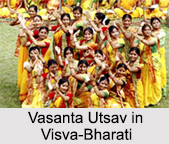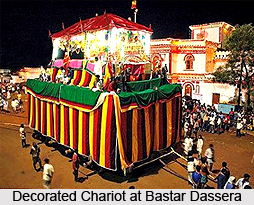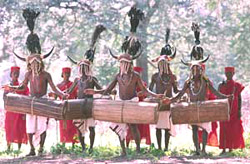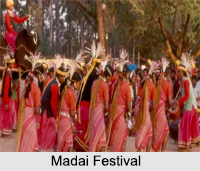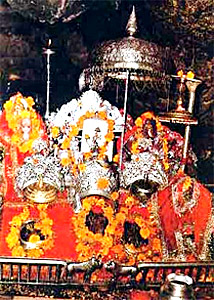
Jammu and Kashmir temple festivals are closely associated with the tradition and history of the state. These festivals not only represent cultural unity but also mirror the society of the natives as a whole. Some of these festivals have a rich history while others have been adapted as a part of the culture of north India. These temple festivals of Jammu and Kashmir blend in culture, society, tradition, and beliefs of the people.
Significant Temple Festivals of Jammu and Kashmir
Jammu and Kashmir has been blessed with a number of festivals that trace their origin to the temples of the state. Here we have mentioned the famous and mostly celebrated temple festivals of Jammu and Kashmir.
Lohri
Lohri is held in January every year. This festival is also known as Makar Sankranti. It states the onset of spring. The whole of Jammu region is adorned with a festive look on this day. Thousands take a dip in the holy rivers. `Havan Yagnas` are lightened up nearly every house and temple in Jammu. In the rural areas, during Lohri, a custom is followed where boys go around asking for gifts from newly-weds and new parents. A special dance, the `Chajja` is held on the occasion of Lohri. The whole atmosphere comes alive with the pulsating drumbeats.
Baisakhi
Baisakhi is held in April. This Jammu and Kashmir temple festival is celebrated to mark good harvest of the year and the event is considered auspicious especially for marriages. Devotees who unfailingly take a ritual dip every year throng Rivers, canals and ponds. People go to the Nagbani Temple to witness a grand New Year celebration. Numerous fairs are organized in Jammu and Kashmir and people come in thousands to celebrate the start of the New Year and watch the famous Bhangra dance of Punjab.
For the Sikhs of Jammu, Baisakhi is the day their tenth Guru Gobind Singhji formed the Khalsa sect in 1699. The Gurudwaras are crowded with people who come to listen to Kirtans, offer prayers and feast on the prasad from the common kitchen (Langar). Bahu Mela, a major Jammu and Kashmir temple festival is held at the Kali Temple in Bahu Fort (Jammu), twice a year, in March-April or during Baisakhi and September-October.
Chaitre Chaudash
Chaitre Chaudash is one of the important Jammu and Kashmir temple festivals, held in March or April. It is celebrated at Uttar Behni, about 25 kms from Jammu. Thousands of pilgrims visit the place to pray and also takes dip in the holy water of Devak River, locally known as Gupta Ganga.
Purmandal Mela
In Purmandal Mela, Lord Shiva is worshipped in the temples. On Shivratri, people celebrate the marriage of Lord Shiva to Goddess Parvati in this state. The people of Jammu also come out in their colourful best to celebrate Shivratri at Peer Khoh, the Ranbireshwar. The Panjbhaktar Temple is the main site for this celebration.
Jhiri Mela
Jhiri Mela is an annual fair which is held in Jhiri in the name of Baba Jitu. It is held in the months of October or November. Baba Jitu is a simple and honest farmer who preferred to kill himself rather than submit to the unjust demands of the local landlord to part with his crop. He killed himself in the village of Jhiri, 14 kms from Jammu. A legend has grown around the Baba and his followers congregate at Jhiri on the appointed day from every corner of North India as they revere him for his compassion, courage and honesty.
Navratra Festival
Like most part of India, Navratra is celebrated in Jammu and Kashmir also with much pomp and glory. Although the yatra to the shrine of Mata Vaishno Devi is a round-the-year event, the one undertaken during the Navratras is considered the most auspicious. This festival is celebrated in the month of September-October. In order to showcase and highlight the culture, heritage and traditions of the area during this period, the State Tourism Department has instituted the Navratra Festival as an annual event to be held during September-October for all the nine auspicious days of Navratri. This festival showcases the culture and traditions of the region among the millions of pilgrims who visit the Vaishnodevi Shrine during this festival.

